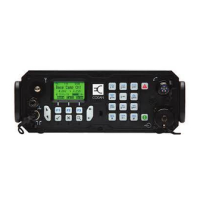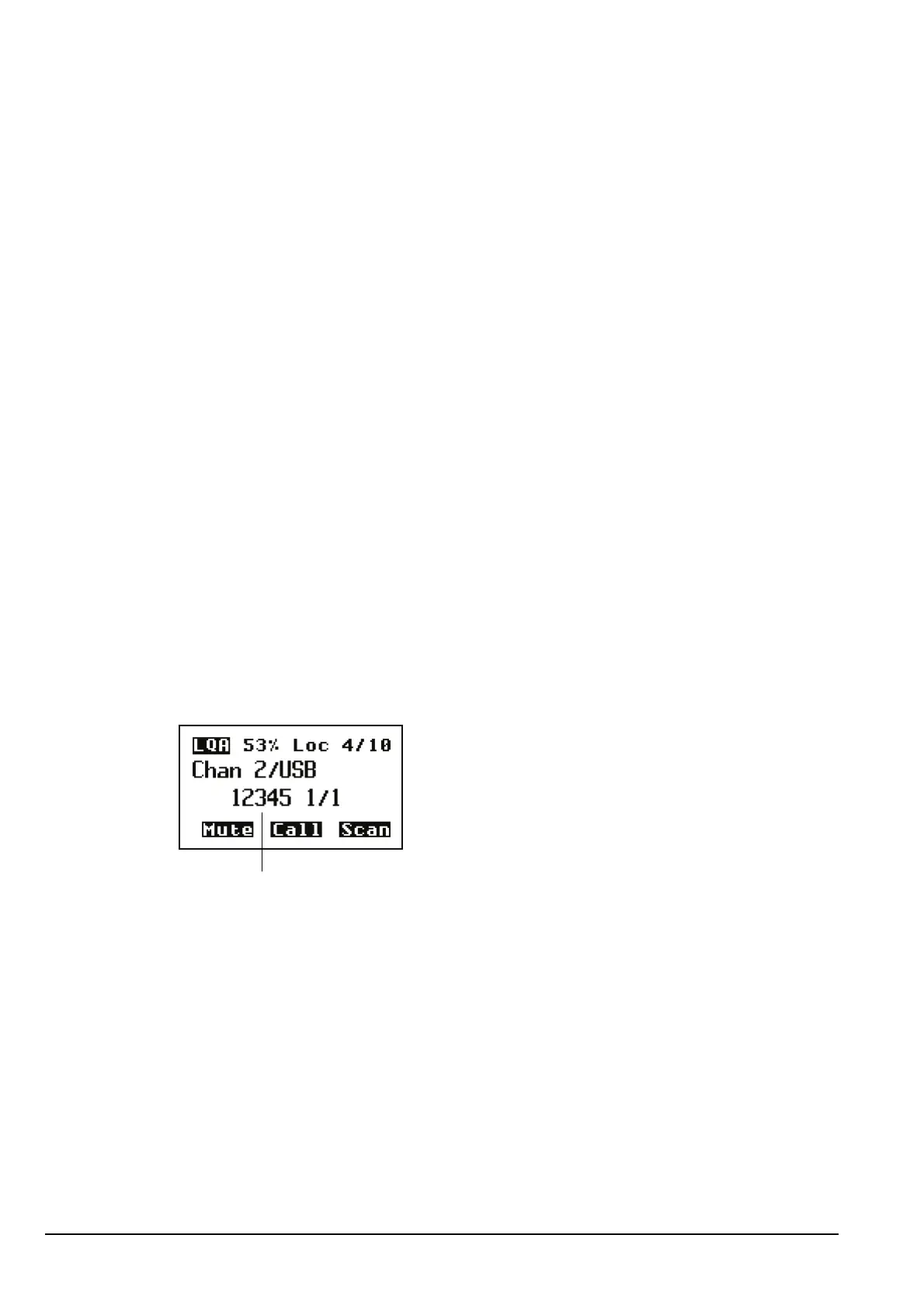Making and receiving calls
204 Manpack Transceiver 2110 series Reference Manual
Replacing LQA information for all channels in an ALE/CALM network
If your station operates in a rapidly changing environment, for example, interactions
with mobile stations, you may want to replace the network-specific LQA information in
the transceiver’s database for the current time slot just prior to making a call in the
network. You can do this by making a Channel Test call in the network using the Group
Selective or NET address syntax.
If you want to replace the LQA information for the current time slot in an ALE/CALM
network in your transceiver, you can do so in two ways. You can:
• start a call then, when prompted to select a channel/mode, test one or more
channel/mode combinations
• make a Channel Test call to test conditions before making the final call
During a Channel Test call in an ALE/CALM network, the LQA screen is visible,
indicating the most recent response from a station, and a progress report on the highest
number of responses received on any channel and the number of channels tried.
Figure 33: LQA screen showing the most recent response
For more information on the LQA screen see page 263, LQA Screen entry.
NOTE
You can make a Channel Test call in an ALE/CALM network if you have
the MIL-STD-188-141B ALE option installed (2110 only).
CAUTION
You cannot make a Channel Test call using the ALL, ANY, or
Wildcard address syntax, or to a NET that is set up to link
immediately (see page 158, Settings in the NET List).
NOTE
The Channel Test call updates the LQA information for the current time
slot only. Old LQA information is retained in other time slots. If you have
moved your station to another location you may want to clear all of the
LQA information from the database (see page 245, ALE LQA Clear).
station that has responded
most recently

